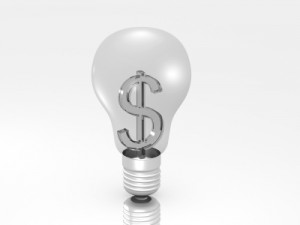The Australian Government has released the Energy White Paper which focuses on increasing market competition, energy productivity and investment to give industry and consumers certainty and confidence in energy policy.

user: sscreations
Energy Networks Association (ENA) CEO, John Bradley, said the Energy White Paper provided a sensible policy framework to enable consumers to take control of their energy use with new information, fairer pricing and emerging technologies.
“The Energy White Paper has rightly focused on the need to modernise Australia’s outdated electricity tariff structures, to reward customers who use off-peak energy and avoid unnecessary investments. We welcome the Government’s commitment for the COAG Energy Council to deliver a concrete implementation plan for electricity tariff reform by the end of this year,” Mr Bradley said.
“Australia has seen multiple studies conclude that cost-reflective tariffs, enabled by smart meters, would benefit most consumers, including lowering the bills by up to 80% of customers in a hardship program.”
He said the energy network service providers looked forward to supporting the Government’s implementation of its National Energy Productivity Plan, which is being developed for improving Australia’s energy use against a global and transitioning energy market.
“ENA endorses a holistic approach to assessing energy productivity which recognises the capital intensive nature of energy services and the combined economic cost to the community of supply and demand management measures in an integrated way,” Mr Bradley said.
“The Australian Government has delivered energy policy principles which support the modernisation of the Australian energy system in its White Paper.”
The Electrical Trades Union (ETU), however, was not so enthusiastic about the quality of the Government’s Energy White Paper, saying it “has missed the opportunity to move towards nationally consistent electricity tariffs” by retaining large inequalities in power costs for Australian consumers.
ETU national secretary Allen Hicks said that with the creation of the National Electricity Market (NEM) and the Federal Government’s increasing role as the prime regulator for the electricity sector, it was time a national approach to retail price setting was also examined.
“Recent years have seen a substantial centralisation of the electricity sector, with the NEM, the Australian Energy Regulator, Australian Energy Market Operator and the Australian Energy Market Commission (AEMC),” Mr Hicks said.
“With vastly divergent power prices for consumers based solely on their geographic location, the Federal Government should have taken this opportunity to also examine the concept of harmonizing retail electricity tariffs. If we have a National Electricity Market, why not have a national electricity price?”
He said the Paper failed to address the duplication of roles and resources between state and federal regulatory agencies and also criticised the ideological focus on privatisation as a driver of cost savings.
“Claims that privatising energy assets will increase competition and deliver cheaper electricity are simplistic and fail to acknowledge recent experiences,” Mr Hicks said.
“In the last year the Australian Competition and Consumer Commission (ACCC) has challenged the concentration of generation assets, while private owners have mothballed a base load power station to reduce supply and prop up power prices.”




















